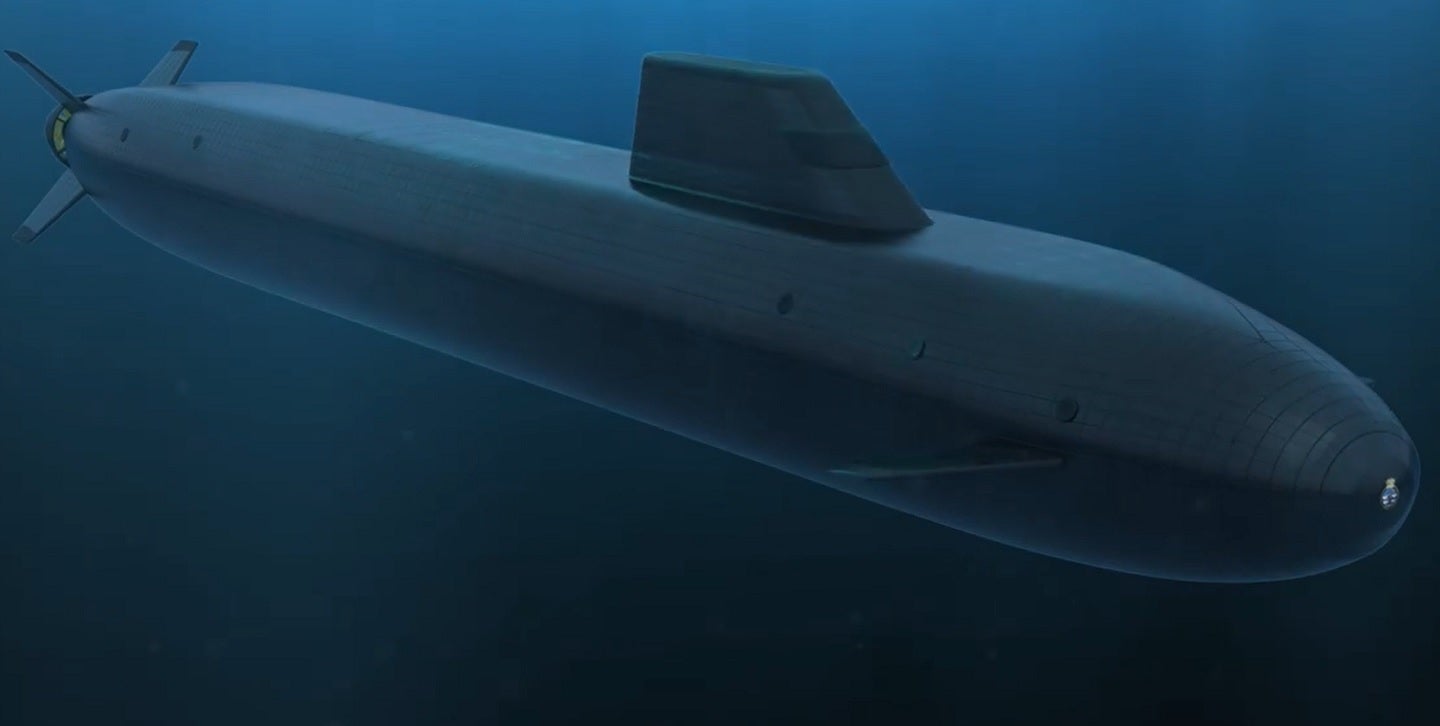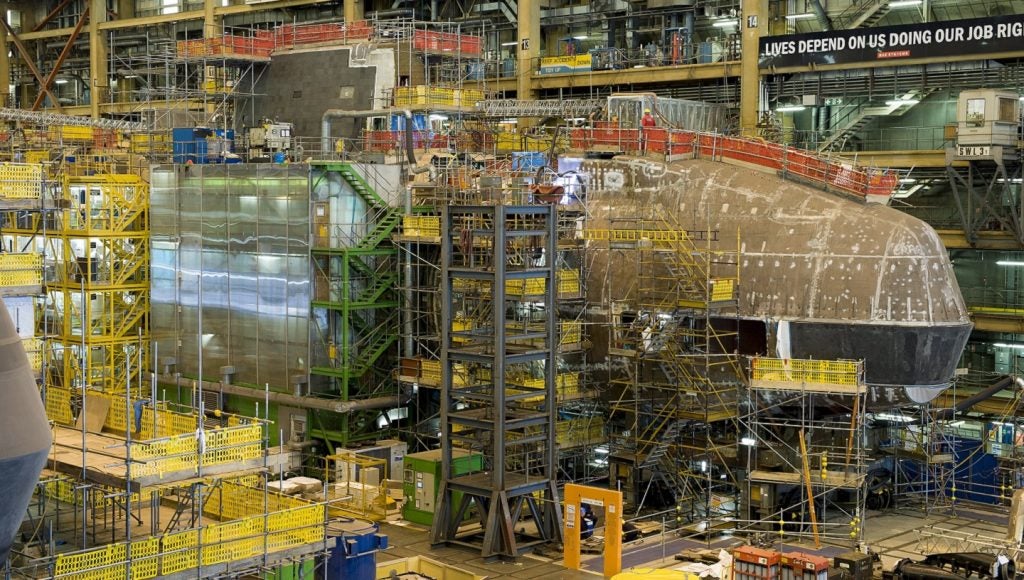
With Australia beginning to build up its own nuclear-powered attack submarine (SSN) capability as part of the AUKUS security triad, national governments in Washington, London, and Canberra have tied themselves to the joint development and fielding of an entirely new class of attack submarine – the SSN-AUKUS.
Announcing the move to develop the SSN-AUKUS on 13 March at a press conference at San Diego Naval Base, political leaders of the US, UK, and Australia revealed the scale of the decision that saw Canberra cancel its plan to acquire conventional diesel-electric submarines in 2021 from France and opt for the Anglo-US partnership.
Before the SSN-AUKUS, Australia will acquire an initial fleet of three US Virginia-class SSNs from the US, delivered in the early 2030s. In addition, a subsequent option of two further Virginia-class SSNs will be available, potentially providing the Royal Australian Navy with a fleet of five nuclear-powered attack submarines.
The acquisition and use of the Virginia’s will enable Australia to develop competencies in the operation of nuclear-powered platforms, which in the expanses of the western Pacific Ocean are better suited than conventionally powered alternatives, such as the Barracuda class originally agreed to be developed with France.
However, it is in the historic development of the SSN-AUKUS, effectively an evolution of the UK’s SSNR (Submersible Ship Nuclear Replacement) concept planned to replace the Astute-class SSNs currently being introduced into UK Royal Navy service, that the greatest shift can be seen. Never before has a nuclear-powered submarine been developed for simultaneous use by two navies and countries tens of thousands of miles apart and responsible for vastly different areas of operations.
SSNR becomes the SSN-AUKUS
Announced in 2021 with the beginning of work to replace the Royal Navy’s Astute class even before all seven planned boats were delivered into service, the UK committed £85m each to BAE Systems and Rolls Royce to “start thinking” about the kinds of capabilities that the new SSNR class could wield.
BAE Systems’ Barrow-in-Furness site in Cumbria, England, is the home of UK submarine manufacturing, and currently responsible for the build and delivery of the remaining Astute-class SSNs and the new Dreadnought nuclear-powered ballistic missile submarines (SSBN), with the latter type fielding the country’s nuclear deterrent.
Rolls Royce meanwhile builds the pressurised water reactors (PWR) used by UK submarines, meaning that the boats once under way never need to resurface during operations, their only limiting factor being the stores required to sustain the crew. The Astute class uses the PWR2, while the Dreadnought class will feature the under-development PWR3 power source.
With announcements that the SSN-AUKUS will become the largest attack submarines ever fielded by the UK Royal Navy, it is possible that the PW3 or a derivative could be used for the new joint UK-Australia SSN. Currently, a submerged Astute class displaces around 7,600t, compared to the approximate 10,000t of the latest Block V Virginia class.
Additionally, the SSNR was thought to be being designed with the consideration to contain an internal vertical launch system (VLS) from which to fire cruise missiles and other munitions. Given that UK SSNs do not use a VLS, instead firing all munitions (including cruise missiles) via forward-facing launch tubes, it is almost certain that the US would assist in the integration of such systems into the SSNR, now the rebranded SSN-AUKUS.
The UK and US are already collaborating on VLS technology, with the UK Dreadnought-class SSBNs to use the same system as being developed for the US Navy’s Columbia-class SSBNs and designed specifically to accommodate nuclear-tipped ballistic missiles.
The SSN-AUKUS could also make use of sharply angled conning towers, well as the X-form tail configuration of the Dreadnought class. Given the integrated VLS, the SSN-AUKUS could embark cruise missiles such as the Tomahawk for land or surface strike, with the latest Block IV iterations further upgraded in the years ahead. Torpedoes could be the UK’s newest variant of the reliable Spearfish heavyweight munition, or alternatively invest into a future US Navy design.
Sensors are likely to focus on what is being developed for the newest Astute batch and Dreadnought class, potentially leaning heavily on European companies such as Thales, with passive sonar flank arrays likely, as well as a towed array sonar.
Manufacture and timelines
Manufacture of the SSN-AUKUS will take place initially in the UK, with London and the US helping Australia develop its own indigenous manufacturing capability, possibly around Perth in the west of the country. Capacity at the UK’s military boatyard is tight, with little excess without additional investment in hard infrastructure and workforce.

Five Astute boats are currently in UK service, with the newest, HMS Anson, joining Astute, Ambush, Artful, and Audacious in mid-2022. A further two boats are under construction (Agamemnon and Agincourt), with each boat costing between £1.3-1.6bn and expected to service for at least 25 years with the Royal Navy. Final deliveries are planned by 2026.
HMS Astute itself has already been in service over a decade having commissioned in 2010, indicating that it will exceed the 25-year service life if the first of the planned AUKUS SSNs is delivered according to the current timeline, expected to be in the “late-2030s”, revealed on 13 March.
Manufacture of the Astute-class boats has each taken between nine and 11 years, entering service every 2-4 years. Extrapolating these dates, manufacture of the SSN-AUKUS to meet the UK delivery timeline, and the “early-2040s” date for the delivery of Australia’s first SSN-AUKUS as it begins to replace the Virginia class bought from the US, would begin in the late-2020s at Barrow-in-Furness and a couple of years afterwards in Australia.
A late-2020s timeline for the laying down of the first UK AUKUS SSN tallies with the ending of the Astute builds. Steel was cut for the third Dreadnought boat in February 2023, with a planned period of around 15 years between the start of manufacture and commissioning into Royal Navy service.








